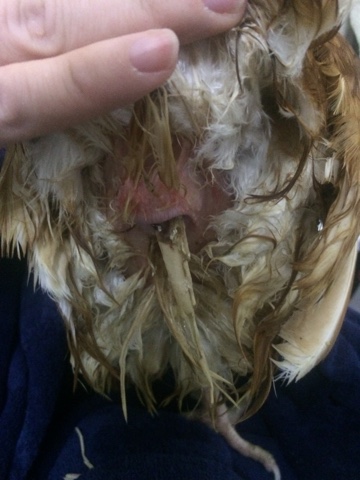I had a hen that died from cocci with a secondary cause of death being mareks. This was diagnosed by the Veterinary Diagnostic clinic, so I'm inclined to accept their judgement.
Step 1: take a deep breath. Don't make any hasty decisions. If you are like me and only had one sick bird and the rest seem fine, you have time. If you have multiple birds sick, cull the sick ones.
Useful facts:
- There are several different variants of mareks
- It is present in the dander of infected birds and can travel for miles.
- You can carry the dander on your clothes and infect other birds.
- It can live for years in the soil
- It is safe to eat birds with Mareks
- Hens do not pass Mareks to their eggs
- The incubation process (in an incubator) kills Mareks
- There is a vaccine for certain strains. Vaccinated chicks need to not be exposed to Mareks for the first two weeks.
- You need special chemicals to kill Marek's. Just bleach or vinegar isn't going to do it.
- Certain breeds (silkies, polishes) are very susceptible.
- Quail can catch mareks. Turkeys have their own version that can be used as a vaccine for chickens. Ducks do not catch it.
What to do with current birds?
First, what should I do with my current birds?
- Cull
- Leave them alive
There's several different kinds of Mareks. My hen got the kind that causes tumors and leads to immune suppression (hence the cocci). No one else showed any symptoms, so to me this meant I had a very mild strain. Mareks can live in the soil for several years, so just culling and starting over is no guarantee that the next batch wouldn't catch it.
My current choice is to leave them alone. They are laying. They are not acting sick. I will cull as soon as I see symptoms instead of separating them and giving them a "grace week". It does mean I have a pair of shoes I never wear in the backyard and if I'm going anywhere with other chickens I change my clothes first.
What about cleaning?
I'm no longer using the used bedding from my chickens in my garden. When I clean out the coop next year before I add new chicks, I will buy one of the cleaners like oxine (not sure if it has to be activated or not) or virkon that kills mareks.
What about the future?
Chicks
OK, so what about the spring. I like to have a few pullets so I get eggs over the winter.
- Buy birds older than 16-weeks. Older birds are less susceptible, but they can also introduce new diseases
- Create my own strain of chickens. Breed from hens that haven't died and raise chicks that are immune (this isn't a choice for me since I'm not allowed roosters)
- Use breeds that are less susceptible. Egyptian fayoumis and some strains of leghorns are immune. These breeds are flighty though and the fayoumis need to free range and like to fly.
- Buy eggs or chicks from a local petting zoo. If those chickens are still alive, they're probably immune to everything known to mankind. I called and they do not vaccinate, so it should be true immunity.
- Hatch eggs and vaccinate chicks myself. The vaccine is expensive and has to be shipped frozen. Once mixed up the batch has to be used with a few hours. It is possible to break the wafer into pieces so you can save part of the vaccine for later. The chicks need to not be exposed to Mareks for two weeks so the vaccine can take hold.
- Buy vaccinated chicks. The chicks need to not be exposed to Mareks for two weeks so the vaccine can take hold.
I keep going and back and forth between hatching eggs from the petting zoo and buying vaccinated chicks. Currently I'm planning on just buying vaccinated chicks.
Vaccine issues
The vaccine is awesome, but presents a few problems.
- Chicks must be kept isolated from Mareks for two weeks (so no broodies). The chicks also can't be housed near your other birds and also, not in the shed where you kept your sick chicken.
- The vaccine is leaky. What this means is that it keeps chickens from dying not from getting sick. This means they have Mareks, but don't die. It means they might keep shedding virus for a long time instead of dying. It also means that a very strong strain of Mareks might be passed on instead of killing all the chickens who caught it.
End of life / Extra birds
Marek's also complicates the extra hens / roosters issues. You cannot sell / giveaway /rehome any bird from your flock if you have Mareks. It isn't worth the risk to other flocks. So any bird that comes onto my property has to leave via the stewpot or proper burial.
A bird with Marek's is safe to eat. Eggs from your flock are safe to eat. Others could hatch those eggs as long as they understand the eggs must be incubated in an incubator.
Honestly, this is the part that bugs me the most. I was hoping to just sell my older hens as they got to the end of their laying, but now I will have to cull. I still haven't decided if it would be ethical to sell extra birds "for eating only" to someone who doesn't have chickens (Probably not, but maybe if I knew someone who would wack them right away it would be OK.)
When I first found out I had Mareks, I was very upset. Now I'm more hopeful. We'll see what the spring brings :)
